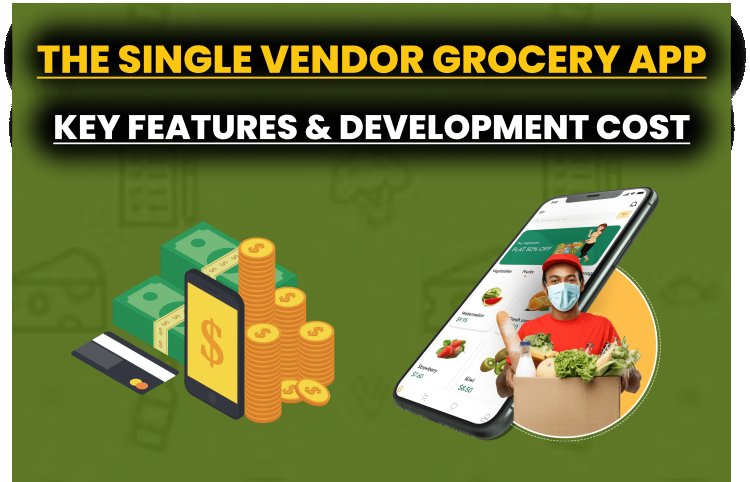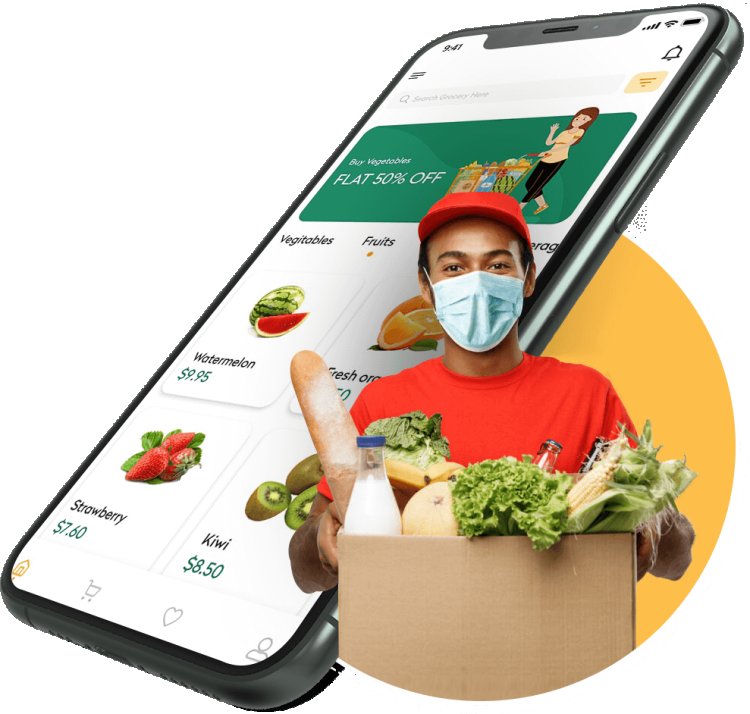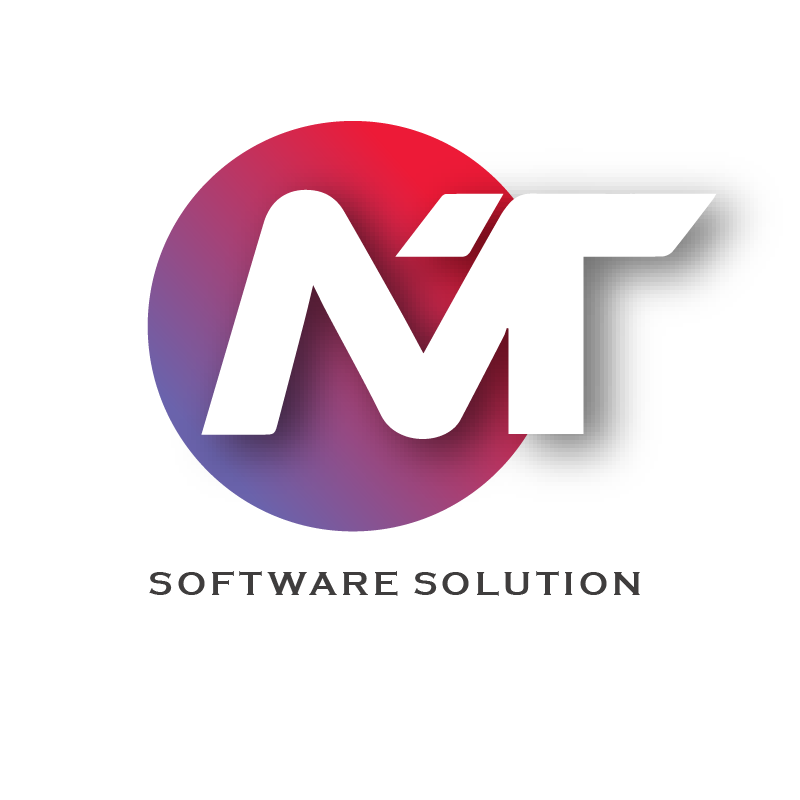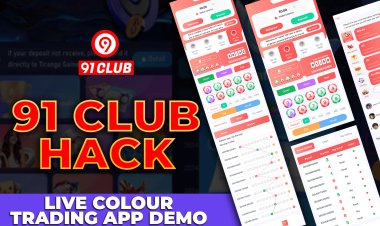Single Vendor Grocery App - Key Features and Development Cost?
How to make a Single Vendor Grocery App? how to much does it cost to make a Single Vendor Grocery App? Single Vendor Grocery App development.

The Single Vendor Grocery App Experience
Single Vendor Grocery Apps are very common nowadays. In recent years, the way we shop for groceries has undergone a significant transformation.
In the digital fast paced, people are not interested and not convenient in reaching shops for grocery shopping. Online Grocery Apps comes up with a great and convenient way to shop groceries at your doorstep.
With the rise of technology and convenience, single vendor grocery apps have become an integral part of our lives. These apps offer a seamless and efficient way to purchase daily essentials without leaving the comfort of your home. In this blog, we will explore the single vendor grocery app experience and how it has revolutionized the way we shop for groceries.
What is a Single Vendor Grocery App?

A Single Vendor Grocery App is a mobile application designed to facilitate the purchase of groceries from a single, specific vendor or store. These apps are typically developed and operated by a single grocery store or supermarket and are aimed at providing a convenient shopping experience for customers who want to buy groceries from that particular store or shop.
Single-vendor applications operate with a sole vendor or seller. They target the audience and sell their products online. The list of the items are also managed by the seller only. It is like one vendor selling their products to multiple customers.
Key features and functionalities of a Single Vendor Grocery App may include:

- Product Catalog: The app lists all the products available in the store, categorized into various sections such as fruits, vegetables, dairy, meat, etc.
- User Accounts: Enable your customers or users to create their account or profile. Customers can create accounts, providing their personal information and preferences for a customized shopping experience.
- Search and Filters: This feature is very important for the end user, they can search what they want and apply filters according to their needs and wants. Users can search for specific products and use filters to narrow down their product choices.
- Shopping Cart: Customers can add products to their virtual shopping cart, review their selections, and proceed to checkout. In general, shoppers have the option to include items in their digital shopping cart, evaluate their choices, and then move on to the checkout process.
- Checkout and Payment: The app typically offers various payment options, such as credit or debit card, digital wallets, or cash on delivery. Customers can complete their purchase and select a delivery or pickup option.
- Delivery or Pickup Options: Users can choose to have their groceries delivered to their doorstep or schedule a pickup time from the store. Basically, users have the convenient option to select whether they'd like their groceries to be delivered directly to their doorstep or if they prefer, they can schedule a specific pickup time at the store for a more hands-on shopping experience.
- Order Tracking: With the advanced tracking system, customers have the convenience of monitoring the status of their orders in real-time, ensuring they are always informed about the progress of their purchases. This feature is complemented by timely notifications that provide updates on every step of the order journey, from initial processing to final delivery. This not only enhances transparency but also empowers customers with the peace of mind that comes throughout the entire order fulfillment process.
- Loyalty and Rewards: Some apps offer loyalty programs where customers can earn points or discounts for repeat purchases. Loyalty programs are a popular marketing strategy employed by many businesses and apps to cultivate customer loyalty and encourage repeat purchases. These programs are designed to reward customers for their ongoing support and engagement with a particular brand or service.
- Customer Support: A single vendor grocery app may provide customer support through chat, email, or phone for inquiries or issues. It focuses on providing a convenient and efficient shopping experience, typically offering various directions for customer support. These support options are designed to assist users with their inquiries or resolve any issues they may encounter while using the application.
- Promotions and Discounts: The app may display promotions, discounts, and special offers to attract and retain customers. This feature enables the app to effectively engage with its user community, providing them with attractive incentives to continue their promotion and explore the full range of services and products on offer. These promotions, discounts, and special deals serve as powerful tools for enhancing user satisfaction, encouraging repeat usage, and ultimately contributing to the app's overall success and growth.
- Feedback and Ratings: Customers can provide feedback and ratings for products and services, helping others make informed decisions. By allowing customers to share their opinions and rate their experiences, businesses create a transparent and valuable ecosystem that benefits both buyers and sellers.
Single Vendor Grocery App Development Cost
Developing an on-demand grocery delivery app in India typically costs between Rs 15 lakhs to Rs 40 lakhs. This cost can vary based on several factors, including the app's complexity, features, and the development team's rates.
Single Vendor Grocery Apps have gained significant popularity among grocery chains and local supermarkets looking to offer their customers a seamless and convenient shopping experience. Keeping them apart from multi-vendor grocery platforms such as Instacart, these apps operate under a different business model.
The primary focus of Single Vendor Grocery Apps is to exclusively showcase the products and inventory of a single grocery store or supermarket. This exclusivity allows these businesses to create a dedicated online presence, reinforcing their brand identity and connecting with their existing customer base in a more direct manner. For building such types of application services, please explore meratemplate.com.
In conclusion, the single vendor grocery app experience has redefined the way we shop for groceries. It offers unparalleled convenience, a vast selection of products, time-saving features, customization, and flexibility in delivery or pickup options. While there are some challenges to consider, the benefits of using these apps are visible in the ease they bring to our daily lives. As technology continues to advance, we can expect even more innovative features and improvements in the single vendor grocery app experience, making our shopping experiences more enjoyable and efficient.
------------------------------------------------------------------------------------
- Contact us: 8888647482
- Email id: sunil@meratemplate.com
- Telegram - https://t.me/sunilyadavtutorial
- Youtube - https://www.youtube.com/c/MeraTemplate
Thank you so much for taking the time to read my article.




 Mera Template
Mera Template 





































